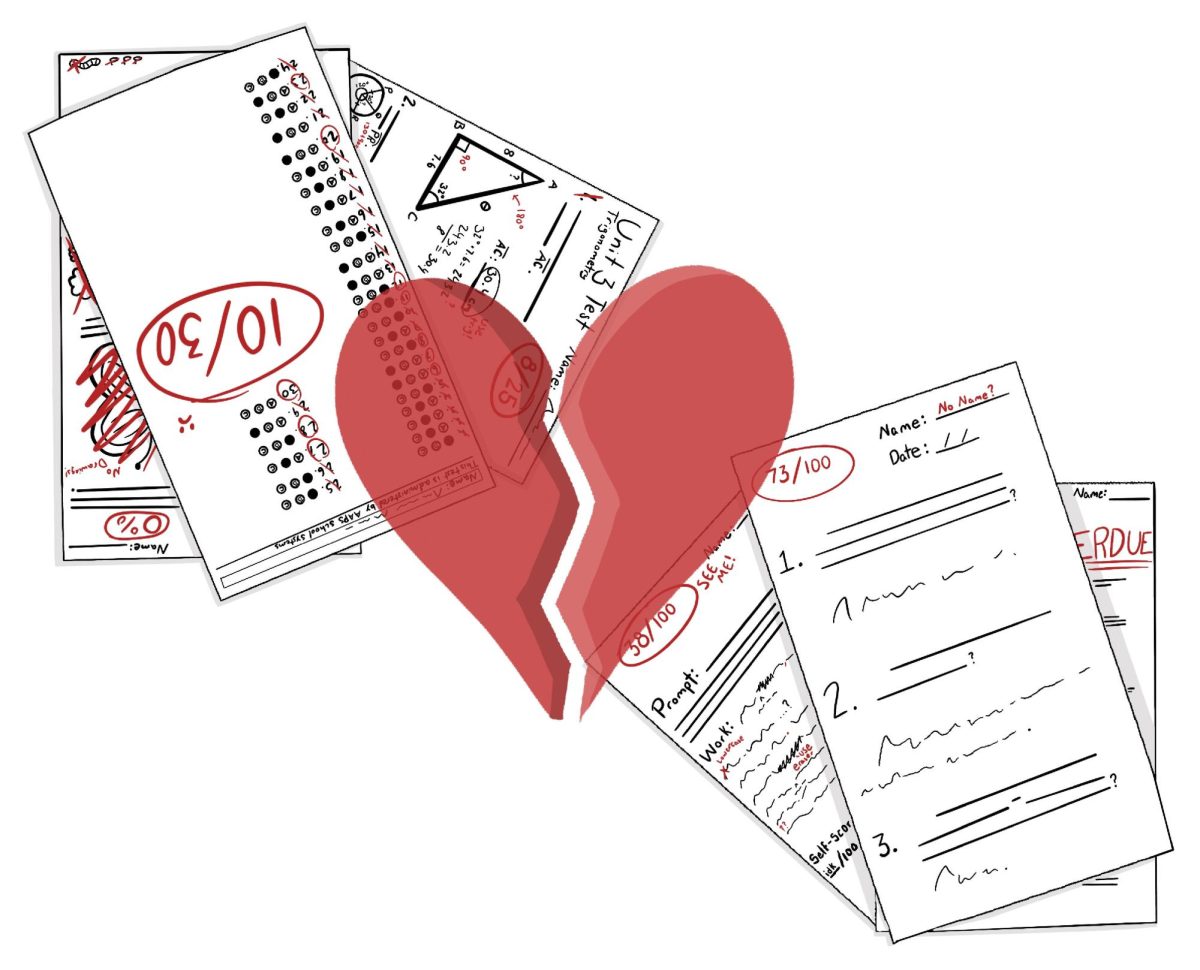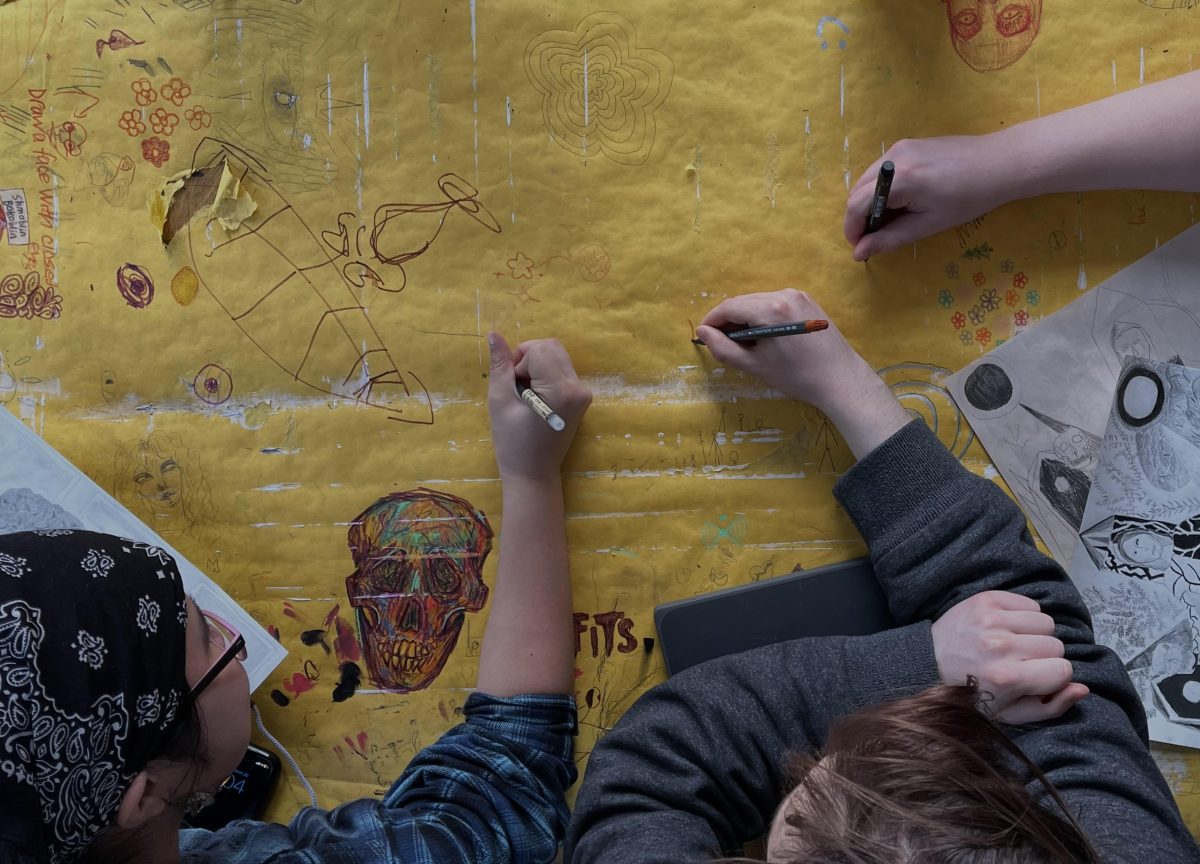
Community High School’s Depression Awareness Group’s (DAG) mission is to raise awareness and decrease stigma about depression at Community High School. With one in four teenagers suffering from major depression, the need for a peer mediation group is strong.
This need was originally recognized by the University of Michigan’s Depression Center, which formed a partnership with AAPS in 2007. Trish Meyers, the Program Director for Outreach & Education at the U of M Depression Center, explained the partnership. “Depression Center staff met with the superintendent and other administrators to propose a partnership for providing depression awareness and suicide prevention education and training for middle and high school principals, teachers, and other staff,” said Meyers.
As the project progressed, the need for a student component was apparent. “We knew it was important for teachers and other staff to be aware of the signs and symptoms of depression in students, but we also knew that students would be more likely to turn to their friends, rather than a teacher, if they were feeling depressed, so we wanted to involve students in the depression awareness/education effort,” said Meyers. In 2009, the U of M depression center added the Peer to Peer Depression Awareness Campaign component to the project.
After being approached by Dean Jennifer Hein, Physical Education and Health teacher, Robbie Stapleton, accepted the role as the leader of CHS’s Depression Awareness Group. Stapleton was excited. “I’ve thought for many years, we have this amazing research facility two miles down the road, why aren’t we working with them? God knows we need it. My curriculum in my health class comes from the depression center; I use all their materials. So it really makes sense that there’s this partnership and it really makes sense that I’m doing it,” she said.
Every year, DAG members attend the U of M Depression Center conference in October. At the conference, they learn about depression, its causes, how to help those struggling with it; and how to form an effective campaign. Various high schools from around Washtenaw county attend the conference; however, each high school’s campaign is different.
At CHS, the majority of the depression awareness campaign is in March (Depression Awareness Month). In years past, its campaign has consisted of trinkets such as fortune cookies and pencils with help lines and the group’s slogan, a movie in forum, followed by a discussion in forum, posters with celebrities who suffer from depression; and three, five minute video clips of students talking about depression’s causes, symptoms, and resources for help, which were displayed on the second floor.
The group is also available as peer educators throughout the year. “They’re pretty well trained and I think in the very least they know what to say, ‘I care. I support. I don’t want anything to happen to you. Here’s where we can go to get help,’” Stapleton explained.
Although depression has always been present in high school, CHS counselor Diane Grant believes it is becoming more of a problem. “Teachers are more stressed because their classes are bigger, students are more stressed because there’s more demand on them to perform and to do more courses in high school than before, even the application process for college is much more stressful…It’s kind of a problem in our culture right now. We’re not taking the time out to say, ‘How do I feel about this and what can I do to make it better?’ Life is happening to people and they don’t know what to do with it. It’s coming faster than they can stop and take notice of what they should do and that’s stressful. After a certain amount of time, you stop functioning as well. That can lead to depression,” said Grant.
She believes that much comes from our culture as well. “I think there’s a lot of stigma in the American culture, so I think that translates down… there’s probably more stigma in other buildings than at CHS. We pride ourselves on being open minded, but at the same time we’re human. No one’s perfect at this and there should always be work to be done in terms of being self aware,” Grant said.
CHS senior and DAG member, Leah Penner, admits to having stigma before being asked to join the group her sophomore year. She hopes that education will help decrease this stigma for others as well. “I think everyone has stigma and I think one of our main goals is to eliminate it. Because ignorance and stigma are tied pretty close together. Just because I didn’t know that much about it, that kind of by default, I definitely had some negative stigma about it and it’s been eliminated just through learning about depression,” Penner said.
Although DAG’s main goal will continue to be raising awareness and decreasing stigma, Stapleton also hopes to see the group reamin a permanent feature at CHS. “I would like to see the Depression Awareness Group institutionalized, meaning it doesn’t matter who the group is, it doesn’t matter who the leader is, its just an institution in Community,” explained Stapleton.







![During a CET rehearsal of the number “A Call to Pierre,” various members in the ensemble, including Maggie Williams, hold up titan tubes. Various people in the ensemble held titan tubes during some numbers in the show, and did basic choreography with them, using the lighting for emphasis. “[Having titan tubes] is a super cool addition to the show,” Williams said.](https://chscommunicator.com/wp-content/uploads/2024/04/67FXGPwwRSi7VlvWUvKuzOOZ2VN2lueTvbEBAWRQ-1200x963.jpg)







